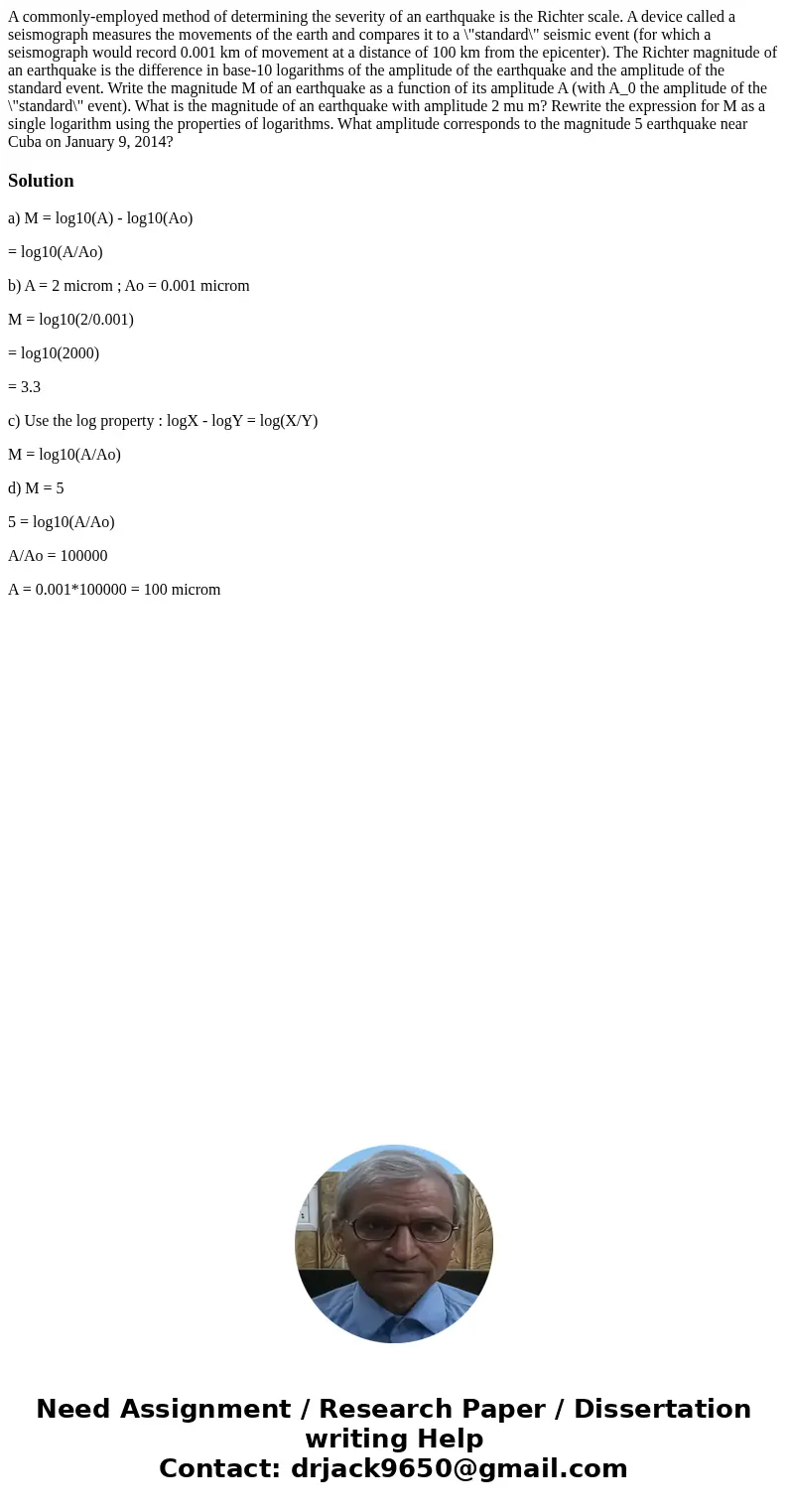A commonlyemployed method of determining the severity of an
A commonly-employed method of determining the severity of an earthquake is the Richter scale. A device called a seismograph measures the movements of the earth and compares it to a \"standard\" seismic event (for which a seismograph would record 0.001 km of movement at a distance of 100 km from the epicenter). The Richter magnitude of an earthquake is the difference in base-10 logarithms of the amplitude of the earthquake and the amplitude of the standard event. Write the magnitude M of an earthquake as a function of its amplitude A (with A_0 the amplitude of the \"standard\" event). What is the magnitude of an earthquake with amplitude 2 mu m? Rewrite the expression for M as a single logarithm using the properties of logarithms. What amplitude corresponds to the magnitude 5 earthquake near Cuba on January 9, 2014?
Solution
a) M = log10(A) - log10(Ao)
= log10(A/Ao)
b) A = 2 microm ; Ao = 0.001 microm
M = log10(2/0.001)
= log10(2000)
= 3.3
c) Use the log property : logX - logY = log(X/Y)
M = log10(A/Ao)
d) M = 5
5 = log10(A/Ao)
A/Ao = 100000
A = 0.001*100000 = 100 microm

 Homework Sourse
Homework Sourse